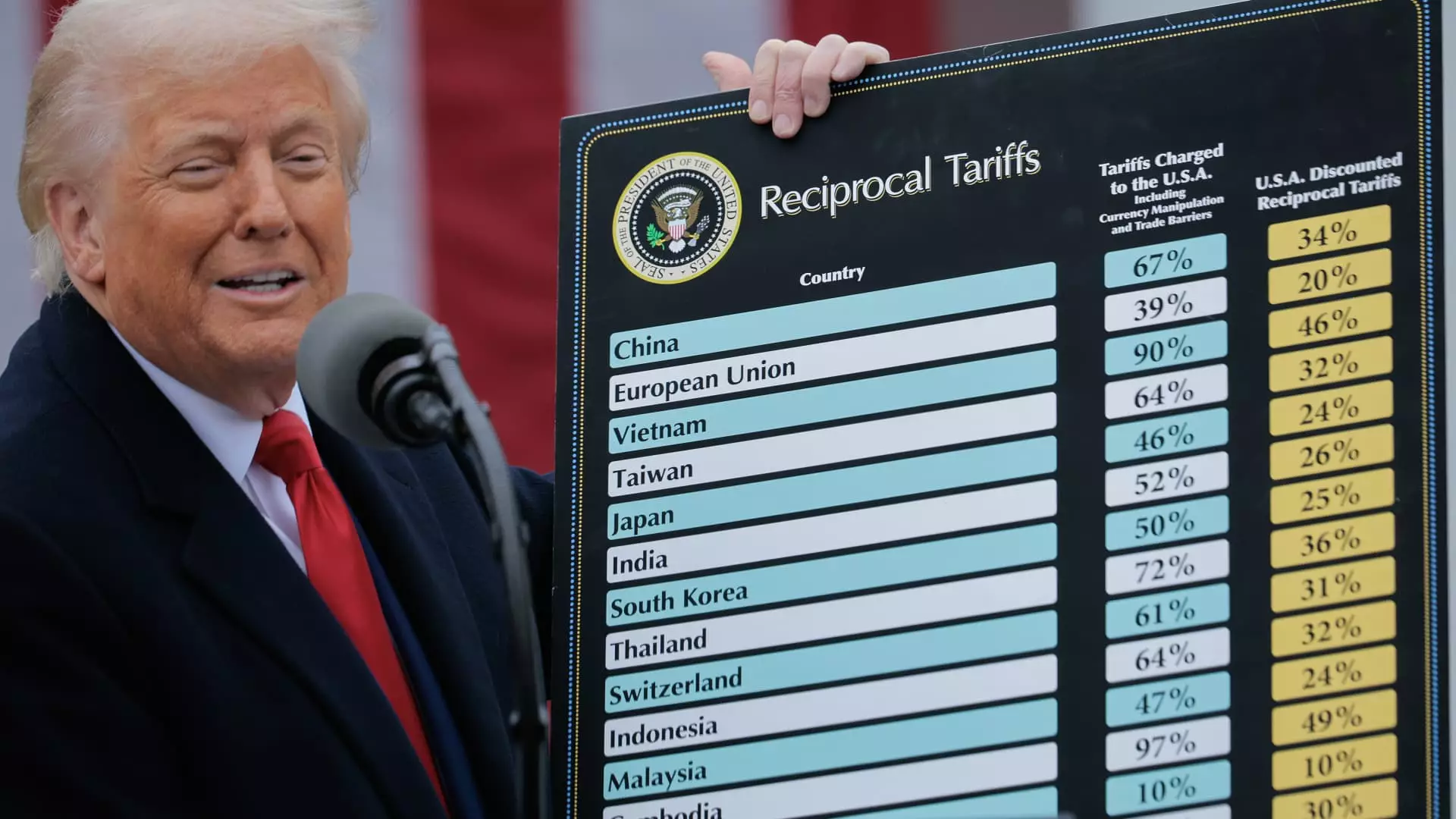When President Donald Trump unveiled his provocative reciprocal tariff strategy, he placed an unexpected emphasis on an overtly aggressive economic posture. By announcing a 10% baseline tariff for nearly all nations and imposing starkly elevated rates on key players like China and Vietnam, he positioned himself as a protector of American interests. However, this approach illustrates not only a superficial understanding of global trade dynamics but also a concerning tendency to misrepresent hard data for political gain. The very premise of reciprocity in trade, which hinges on mutual benefit and equitable tariffs, seems immediately compromised when the calculations used to support such a strategy are called into question.
Sketchy Calculations and Misleading Claims
At the core of Trump’s tariff program, a confusing set of figures was presented as a justification for these sweeping measures. According to the administration’s narrative, China operates with a staggering 67% tariff rate against American goods—an assertion that is not only far-fetched but distortive of reality. Reports from reputable sources, like the Cato Institute, challenge this figure outright, positing that the actual trade-weighted average tariff from China hovers around a mere 3%. This dissonance raises critical concerns about the intellectual rigor behind such policy decisions, painting a picture of a White House that is either woefully uninformed or strategically deceitful.
The Political Ramifications of Misguided Trade Policy
Trump’s polices appear to be driven by a desire for political capital rather than sound economic principles. This trend of inflating tariff figures feeds into a larger narrative that portrays foreign nations as enemies, tapping into a base that revels in overt nationalism. While patriotism is essential, conflating economic aggression with national integrity fails to foster understanding or cooperation amongst trading partners. This strategy inevitably breeds resentment, complicating the already tangled web of international relations and economic partnerships vital to a prosperous America.
Moreover, the selective presentation of data raises serious privacy concerns regarding the intent behind this strategy. The administration’s emphasis on trade deficits over a holistic view of trade—where services are factored in alongside goods—skews public perception and policy decisions alike. Such a narrow perspective neglects the immense value that services bring to the economy, leading to potentially retaliatory measures from those countries wrongly portrayed as fiscal adversaries.
Consequences for American Consumers and Businesses
The most immediate drawback of this aggressive tariff policy will likely be felt by American consumers and businesses. Rising tariffs usually translate into higher prices on imported goods, creating an economic burden that disproportionately affects the middle and lower classes. While the administration touts the intention of protecting American jobs and industries, the long-term ramifications suggest a potential stifling of innovation and growth within those sectors.
The notion that imposing vast tariffs will somehow incentivize domestic production is tenuous. History has shown that protective tariffs can lead to complacency and inefficiency within domestic industries, as businesses may have little incentive to innovate when insulated from foreign competition. The looming threat of inflation coupled with a lack of sustainable economic growth might become the bitter legacy of this nationalistic economic agenda.
Ultimately, the ramifications of Trump’s tariff strategy reach far beyond mere numbers, signaling an era where political posturing takes precedence over steadfast economic principles.

